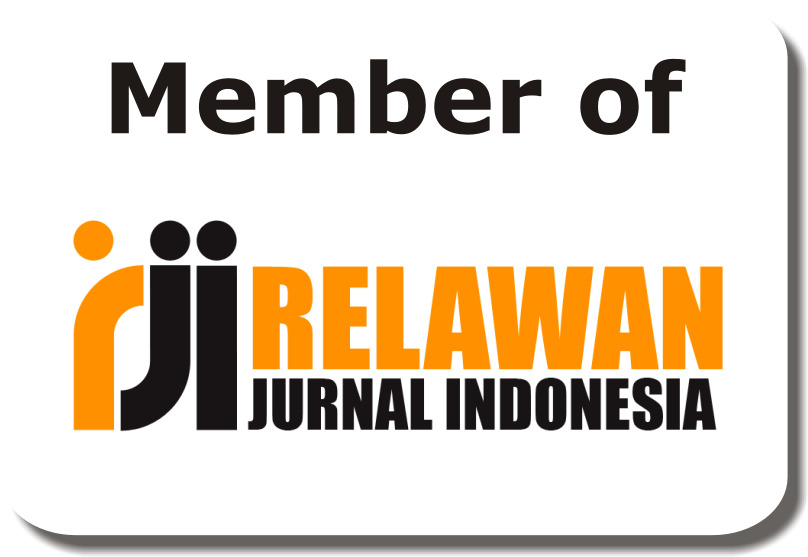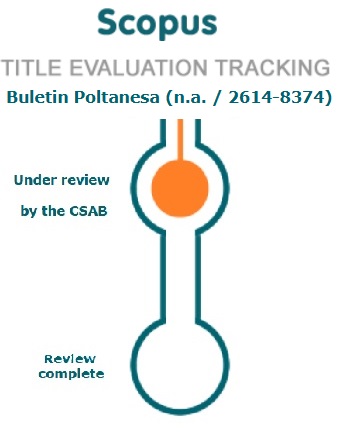Systematic Literature Review: The Effectiveness of Technology in Education
DOI:
https://doi.org/10.51967/tanesa.v26i1.3226Keywords:
Effectiveness, Education, technology-driven eraAbstract
Education in the digitalization era has undergone significant changes using technology-based learning media. This research aims to analyze the effectiveness of the application of technology in the context of education in the digital era. This needs to be done because the development of technology is very rapid and makes users, in this case, educators, need to be very careful in choosing effective technology to the needs and conditions that exist in their respective schools. The method used in this research is Systematic Literature Review (SLR) whose data is collected using publish or perish software which then selected thirty related journals to be discussed. Based on the results of the research conducted, it was found that the application of appropriate technology can increase student engagement, concept understanding, and learning motivation, this is indicated by the increase in student scores which experienced a significant increase. The conclusion of the research can be used as a guide for further research and can be used by teachers and educators in choosing the appropriate application of technology. Of course, the application of technology that can be applied to each school or university is different, this is because each technology applied requires different preparations. Each technology discussed in this study has its advantages and disadvantages. This also needs to be considered in the application of technology because the procurement of facilities requires a large amount of money.
References
Ade Sofyan & Amin Hidayat. (2023). DAMPAK PERKEMBANGAN TEKNOLOGI PENINGKATAN KUALITAS PENDIDIKAN. JURNAL SATYA INFORMATIKA, 7(02), 16–24. https://doi.org/10.59134/jsk.v7i02.163
Afrilia, L., Neviyarni, Arief, D., & Amini, R. (2022). EFEKTIVITAS MEDIA PEMBELAJARAN BERBASIS VIDEO ANIMASI UNTUK MENINGKATKAN MOTIVASI BELAJAR PESERTA DIDIK KELAS IV SEKOLAH DASAR. Jurnal Cakrawala Pendas, 8(3), 710–721. https://doi.org/10.31949/jcp.v8i3.2559
Afrita, J. (2023). Peran Artificial Intelligence dalam Meningkatkan Efisiensi dan Efektifitas Sistem Pendidikan. COMSERVA : Jurnal Penelitian dan Pengabdian Masyarakat, 2(12), 3181–3187. https://doi.org/10.59141/comserva.v2i12.731
Belva Saskia Permana, Lutvia Ainun Hazizah, & Yusuf Tri Herlambang. (2024). Teknologi Pendidikan: Efektivitas Penggunaan Media Pembelajaran Berbasis Teknologi Di Era Digitalisasi. Khatulistiwa: Jurnal Pendidikan dan Sosial Humaniora, 4(1), 19–28. https://doi.org/10.55606/khatulistiwa.v4i1.2702
Cahyaningtias, V. P., & Ridwan, M. (2021). Efektivitas Penerapan Media Pembelajaran Interaktif terhadap Motivasi. Riyadhoh : Jurnal Pendidikan Olahraga, 4(2), 55. https://doi.org/10.31602/rjpo.v4i2.5727
Handayani, F., Hasyim, D. M., Suryono, W., Sutrisno, Sutrisno, & Novita, R. (2023). PERAN TEKNOLOGI PENDIDIKAN DALAM MENDUKUNG EFEKTIVITAS PELAKSANAAN KURIKULUM MERDEKA BELAJAR DI PERGURUAN TINGGI. Jurnal Review Pendidikan dan Pengajaran, 6(4), 1265–1271.
Hendriyati Haryani, Wahid, S. M., Fitriani, A., & Ariq, M. F. (2023). Analisa Peluang Penerapan Teknologi Blockchain dan Gamifikasi pada Pendidikan. Jurnal MENTARI: Manajemen, Pendidikan dan Teknologi Informasi, 1(2), 163–174. https://doi.org/10.34306/mentari.v1i2.250
Kisno, K., Fatmawati, N., Rizqiyani, R., Kurniasih, S., & Ratnasari, E. M. (2023). PEMANFAATAN TEKNOLOGI ARTIFICIAL INTELLIGENCES (AI) SEBAGAI RESPON POSITIF MAHASISWA PIAUD DALAM KREATIVITAS PEMBELAJARAN DAN TRANSFORMASI DIGITAL. IJIGAEd: Indonesian Journal of Islamic Golden Age Education, 4(1), 44. https://doi.org/10.32332/ijigaed.v4i1.7878
Lubis, A. P., & Nuriadin, I. (2022). Efektivitas Aplikasi Wordwall untuk Meningkatkan Hasil Belajar Siswa dalam Pembelajaran Matematika Sekolah Dasar. Jurnal Basicedu, 6(4), 6884–6892. https://doi.org/10.31004/basicedu.v6i4.3400
Mambu, J. G. Z., Pitra, D. H., Ilmi, A. R. M., Nugroho, W., & Saputra, A. M. A. (t.t.). Pemanfaatan Teknologi Artificial Intelligence (AI) Dalam Menghadapi Tantangan Mengajar Guru di Era Digital.
Meduri, N. R. H., Firdaus, R., & Fitriawan, H. (2022). EFEKTIFITAS APLIKASI WEBSITE DALAM PEMBELAJARAN UNTUK MENINGKATKAN MINAT BELAJAR PESERTA DIDIK. Akademika, 11(02), 283–294. https://doi.org/10.34005/akademika.v11i02.2272
Pangestu, A. A., Ifadah, L., & Muanayah, N. A. (2022). Efektivitas Pembelajaran berbasis Multimedia dalam Meningkatkan Nilai Kognitif Peserta Didik di SMP Maarif Tlogomulyo. 1(2).
Pubian, Y. M., & Herpratiwi, H. (2022). PENGGUNAAN MEDIA GOOGLE SITE DALAM PEMBELAJARAN UNTUK MENINGKATKAN EFEKTIFITAS BELAJAR PESERTA DIDIK SEKOLAH DASAR. Akademika, 11(01), 163–172. https://doi.org/10.34005/akademika.v11i01.1693
Putri Kumalasani, M., & Eilmelda, Y. (2022). Analisis Efektivitas Penggunaan E-Modul Berbasis Aplikasi Flipbook Pada Pembelajaran Tematik Di SD. Jurnal Pemikiran dan Pengembangan Sekolah Dasar (JP2SD), 10(1), 39–51. https://doi.org/10.22219/jp2sd.v10i1.20175
Rusyada, H., & Nasir, M. (2022). Efektivitas Penerapan Hybrid Learning Pasca Pandemi Covid-19 di Sekolah Dasar. Jurnal Basicedu, 6(2), 1714–1723. https://doi.org/10.31004/basicedu.v6i2.2275
Salomo Leuwol, F., Basiran, B., Solehuddin, Moh., Vanchapo, A. R., Sartipa, D., & Munisah, E. (2023). EFEKTIVITAS METODE PEMBELAJARAN BERBASIS TEKNOLOGI TERHADAP PENINGKATAN MOTIVASI BELAJAR SISWA DI SEKOLAH. EDUSAINTEK: Jurnal Pendidikan, Sains dan Teknologi, 10(3), 988–999. https://doi.org/10.47668/edusaintek.v10i3.899
Sarnoto, A. Z., Hidayat, R., Hakim, L., Alhan, K., Sari, W. D., & Ika, I. (2023). Analisis Penerapan Teknologi dalam Pembelajaran dan Dampaknya terhadap Hasil Belajar. Journal on Education, 6(1), 82–92. https://doi.org/10.31004/joe.v6i1.2915
Silvanus, J., & Ridwan, R. (2022). Efektivitas Pembelajaran Praktikum dengan Google Sites Berbantuan Quizstar untuk Meningkatkan Kemampuan Berpikir Kreatif Mahasiswa Era Covid-19. Jurnal Teknologi Pendidikan, 11(2), 155–163. https://doi.org/10.32832/tek.pend.v11i2.6118
Socrates, T. P., & Mufit, F. (2022). EFEKTIVITAS PENERAPAN MEDIA PEMBELAJARAN FISIKA BERBASIS AUGMENTED REALITY: STUDI LITERATUR. EduFisika: Jurnal Pendidikan Fisika, 7(1), 96–101. https://doi.org/10.59052/edufisika.v7i1.19219
Sofian, S. R. A., Subchan, W., & Sudarti, S. (2022). PENERAPAN MODEL DISCOVERY LEARNING BERBANTUAN GOOGLE LENS UNTUK MENINGKATKAN AKTIVITAS DAN HASIL BELAJAR SISWA PADA MATERI KLASIFIKASI MAKHLUK HIDUP. Jurnal Teknologi Pendidikan, 11(2), 176–189. https://doi.org/10.32832/tek.pend.v11i2.5972
Sugiarso, B. A., Narasiang, B. S., Pranajaya, S. A., Gunawan, T., Fayola, A. D., Marzuki, & Arifianto, T. (2024). PENERAPAN TEKNOLOGI AUGMENTED REALITY DALAM MENYAJIKAN MATERI PEMBELAJARAN UNTUK MENINGKATKAN MINAT BELAJAR SISWA. Jurnal Review Pendidikan dan Pengajaran, 7(2), 4999–5004.
Suyuti, S., Ekasari Wahyuningrum, P. M., Jamil, M. A., Nawawi, M. L., Aditia, D., & Ayu Lia Rusmayani, N. G. (2023). Analisis Efektivitas Penggunaan Teknologi dalam Pendidikan Terhadap Peningkatan Hasil Belajar. Journal on Education, 6(1), 1–11. https://doi.org/10.31004/joe.v6i1.2908
Tsaaqib, A., Buchori, A., & Endahwuri, D. (2022). EFEKTIVITAS PENGGUNAAN MEDIA PEMBELAJARAN VIRTUAL REALITY (VR) PADA MATERI TRIGONOMETRI TERHADAP MOTIVASI DAN HASIL BELAJAR MATEMATIKA SISWA SMA. JIPMat, 7(1), 11–19. https://doi.org/10.26877/jipmat.v7i1.9950
Utomo, F. T. S. (2023). INOVASI MEDIA PEMBELAJARAN INTERAKTIF UNTUK MENINGKATKAN EFEKTIVITAS PEMBELAJARAN ERA DIGITAL DI SEKOLAH DASAR. Pendas : Jurnal Ilmiah Pendidikan Dasar, 8(2), 3635–3645. https://doi.org/10.23969/jp.v8i2.10066
Downloads
Published
How to Cite
Issue
Section
License
Copyright (c) 2025 Buletin Poltanesa

This work is licensed under a Creative Commons Attribution-ShareAlike 4.0 International License.
The copyright of this article is transferred to Buletin Poltanesa and Politeknik Pertanian Negeri Samarinda, when the article is accepted for publication. the authors transfer all and all rights into and to paper including but not limited to all copyrights in the Buletin Poltanesa. The author represents and warrants that the original is the original and that he/she is the author of this paper unless the material is clearly identified as the original source, with notification of the permission of the copyright owner if necessary.
A Copyright permission is obtained for material published elsewhere and who require permission for this reproduction. Furthermore, I / We hereby transfer the unlimited publication rights of the above paper to Poltanesa. Copyright transfer includes exclusive rights to reproduce and distribute articles, including reprints, translations, photographic reproductions, microforms, electronic forms (offline, online), or other similar reproductions.
The author's mark is appropriate for and accepts responsibility for releasing this material on behalf of any and all coauthor. This Agreement shall be signed by at least one author who has obtained the consent of the co-author (s) if applicable. After the submission of this agreement is signed by the author concerned, the amendment of the author or in the order of the author listed shall not be accepted.








